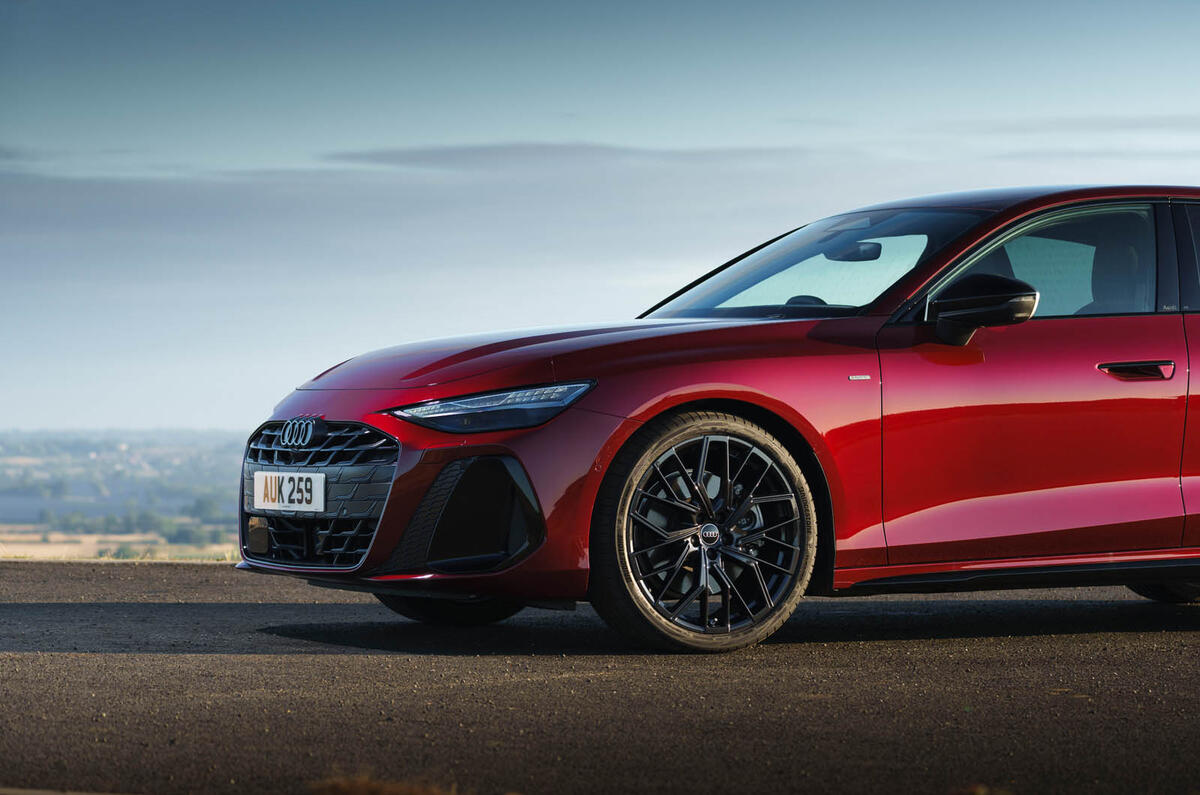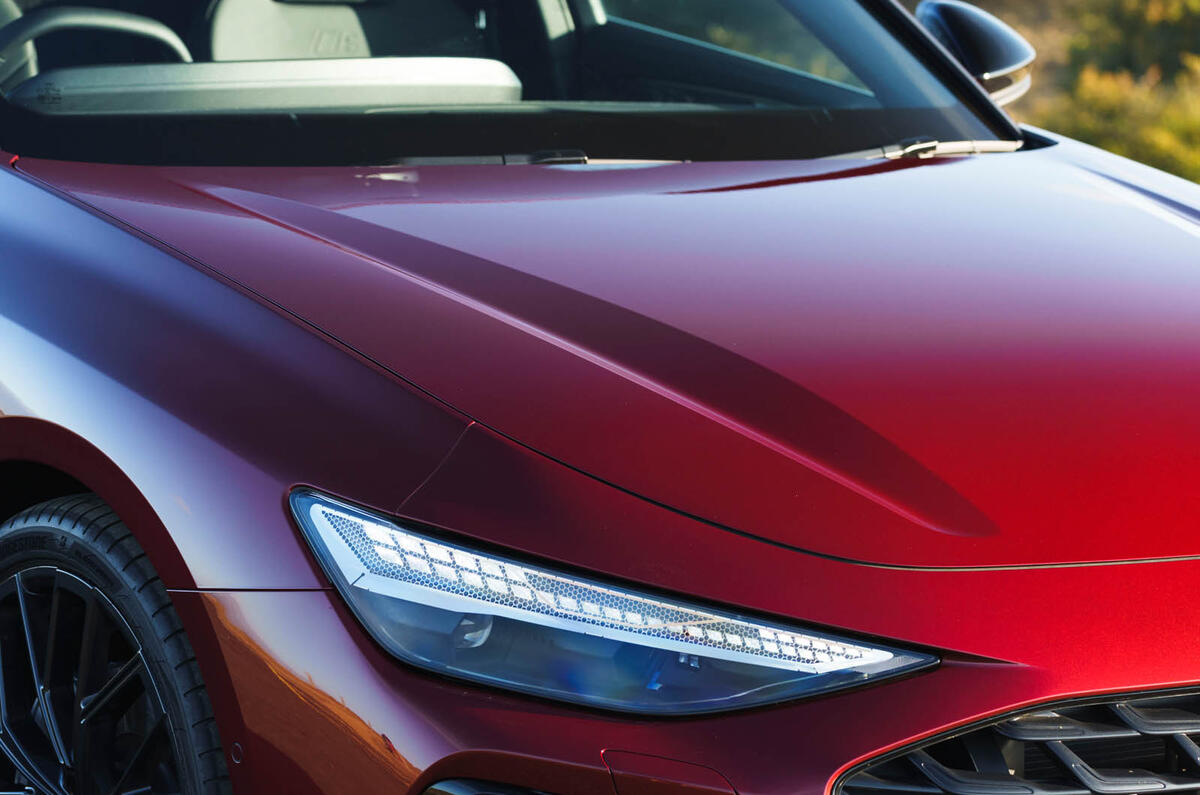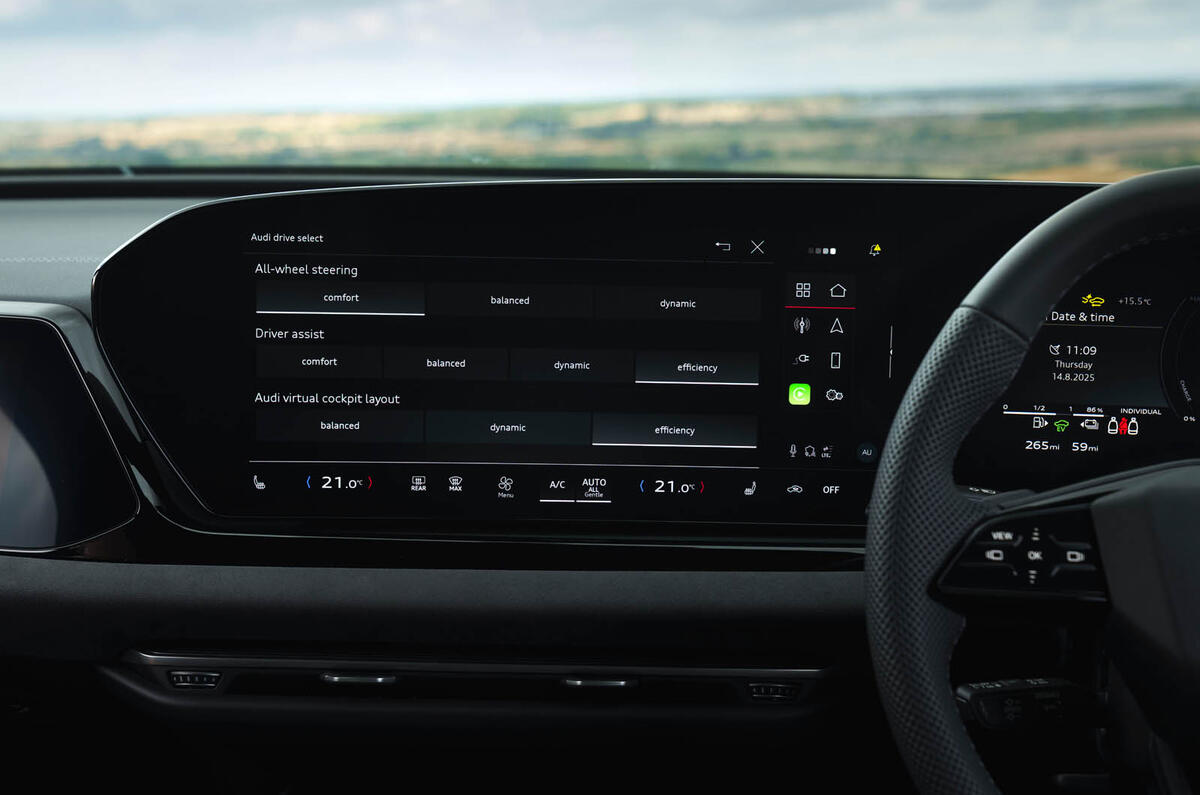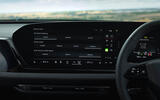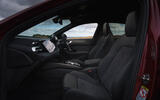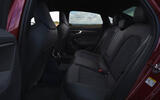Underneath the new body, with its sloped windscreen and gently blistered wheel arches, resides a longitudinally oriented engine, driving the front wheels in lower-end versions or all four in higher ones. At launch, UK buyers can choose either a conventional 2.0-litre petrol or a 2.0-litre diesel with Audi’s new MHEV Plus system, which puts a 24bhp electric motor on the seven-speed dual-clutch automatic gearbox and a 1.7kWh battery under the boot floor. There’s also a 3.0-litre V6 with the same hybrid system (the same powertrain as in the S5), but that won’t be offered in the UK – a victim of CO2 targets. This is disappointing, because refined, effortlessly strong six-cylinder engines have long been part of the A6’s appeal, but an S6, presumably featuring a more powerful V6, will be along shortly.
Our test car is the e-Hybrid, carrying what is potentially the most versatile and frugal of the A6’s powertrains. It pairs the 2.0-litre petrol engine with a permanent magnet synchronous motor sitting between the dual-mass flywheel on the back of the TFSI engine and S Tronic gearbox, above the take-off for the front driveshafts. It feeds up to 141bhp into the driveline, alongside up to 248bhp from the engine. Balancing the two sources so that they provide natural, linear propulsion means the total output is limited to 295bhp and 332lb ft.
The battery that feeds the electric motor – and that harvests energy during deceleration, or can be charged slowly by the engine while on the move – is a nickel-manganese-cobalt pack with a usable 20.7kWh. This is some 40% greater than that of the previous PHEV A6, and results in a claimed range of 60 miles for our Launch Edition car (it’s a little higher for Sport and S Line models). By comparison, BMW’s PHEV 5 Series has 18.7kWh of usable capacity and the Mercedes E-Class 19.5kWh. Class honours duly beckon when it comes to electric range.
We have yet to weigh this car’s most direct rivals, so for now the A6’s as-tested weight of 2197kg exists in isolation. Officially, the e-Hybrid A6 weighs 360kg more than the MHEV TDI A6, though some of that gain will be down to the Quattro system, which only the regular TDI is fitted with. That car’s weight of 1980kg suggests the PHEV accoutrements come at a penalty of about 150kg.
In the UK the A6 is available on three suspensions, beginning with the regular Sport spring and damper package, which is something of a misnomer because it is comfort-oriented and is the one we have habitually recommended. However, most cars will be bought in S Line specification, which uses shorter springs that lower the body by 20mm, along with the fitment of bigger alloy wheels. At the top of the tree is Audi’s adaptive air suspension, which is the only non-passive option and can adjust ride height on the fly – and change the setting by voice command. It costs £1755 and is available only on top-rung Edition 1 cars (our test car did not have it).
To get an Audi with fully mechanical, Torsen-style four-wheel drive, meanwhile, you now need an Audi Q7, an A8, or an S- or RS-branded model. Audi’s Ultra Quattro system is available on the A6 TDI and e-Hybrid, but not the regular TFSI. It continues to use a multi-plate clutch to distribute torque between the axles, but will now bias up to 70% to the rear when exiting corners. Before then, on the way into the corner, the car’s torque vectoring will have slowed the inside wheel more than the same system did on the old A6, to help it cleave into bends more accurately. The e-Hybrid A6 also gets four-wheel steering as standard.




